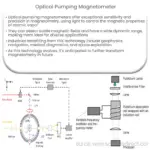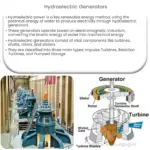Explore the six most common electrical energy storage systems, from Pumped Hydroelectric to Hydrogen Storage, shaping our sustainable energy future.
Overview of the Most Common Electrical Energy Storage Systems
As the world continues to seek sustainable solutions for energy production, energy storage systems have become increasingly important. These systems store electrical energy for later use, helping to bridge the gap between supply and demand. Here, we will discuss the six most common types of electrical energy storage systems.
1. Pumped Hydroelectric Storage (PHS)
Pumped Hydroelectric Storage is the most commonly used large-scale energy storage system. It works by pumping water uphill during periods of low electricity demand and releasing it to generate power when demand is high.
2. Lithium-Ion Batteries
These are the most popular choice for small-scale storage due to their high efficiency, decreasing cost, and compact nature. They are commonly used in electric vehicles, portable electronics, and renewable energy systems.
3. Compressed Air Energy Storage (CAES)
CAES systems store energy by compressing air in underground reservoirs during off-peak hours. The compressed air is later released to power a turbine for electricity generation during peak demand periods.
4. Thermal Storage
Thermal storage systems store energy in the form of heat or cold, which can be later used to generate electricity or directly for heating or cooling applications. Examples include molten salt storage for solar thermal plants and ice storage for air conditioning systems.
5. Flywheel Energy Storage
Flywheel systems store electrical energy as rotational energy in a spinning disc. When energy is needed, the flywheel’s kinetic energy is converted back into electrical energy. They are often used for short-term energy storage due to their quick response times.
6. Hydrogen Energy Storage
Hydrogen energy storage involves the electrolysis of water to produce hydrogen, which can be stored and later used to generate electricity via fuel cells or combustion. This method is gaining attention due to its potential for long-term, large-scale storage, and the possibility of using hydrogen as a clean fuel source.
These six systems represent the forefront of electrical energy storage. As technology advances, we can expect to see these systems improve and new solutions emerge, offering more sustainable and efficient ways of managing our energy needs.




